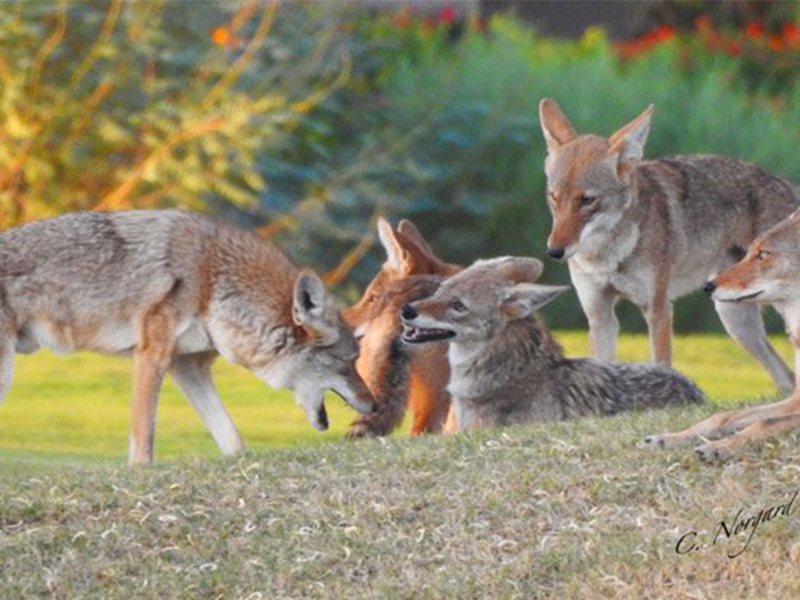


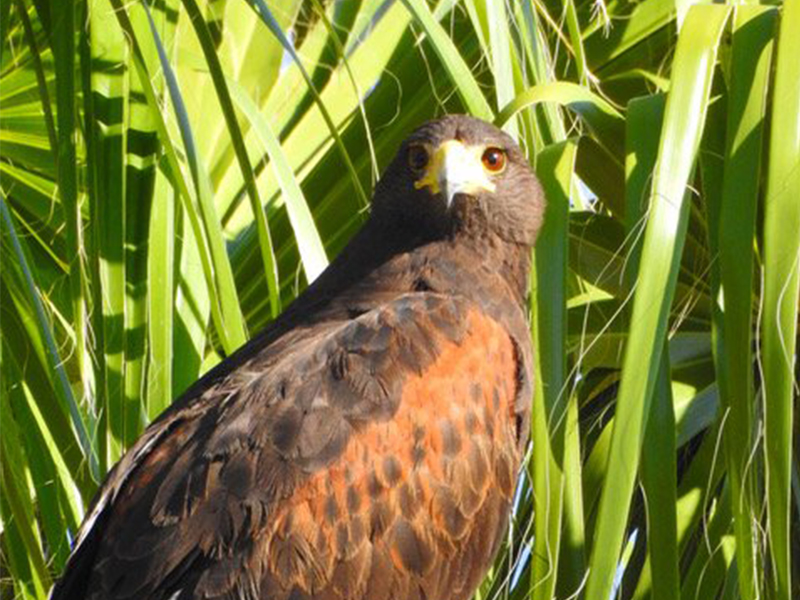


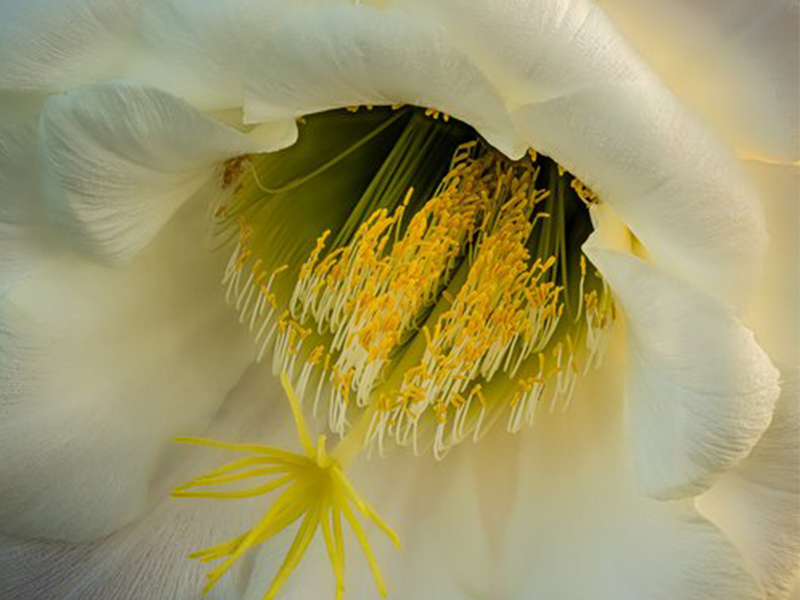
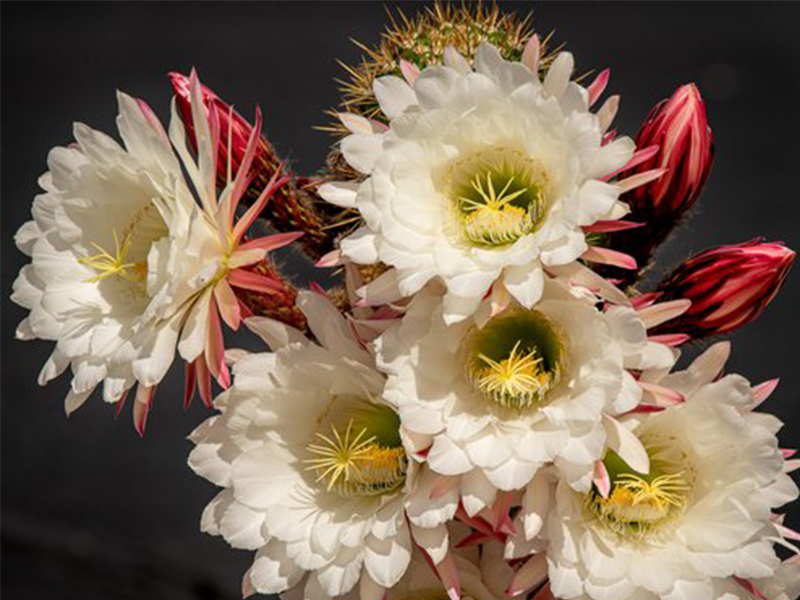
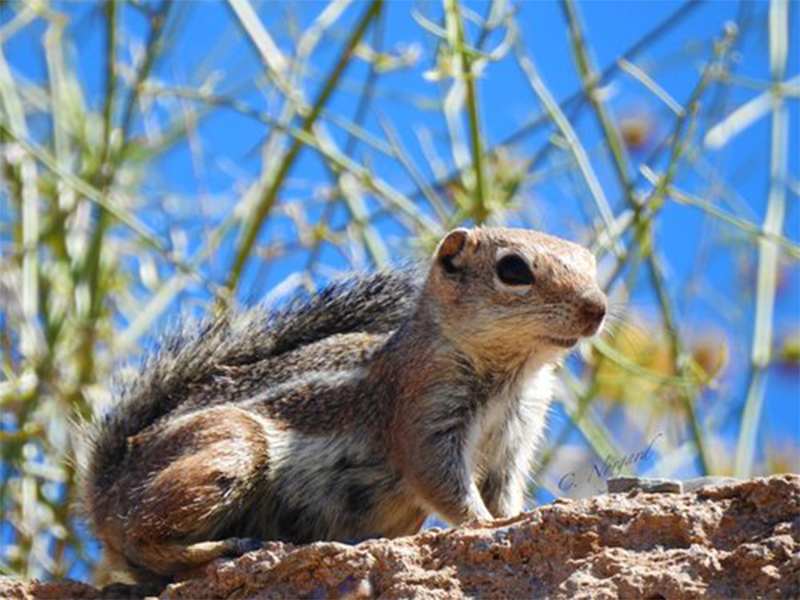
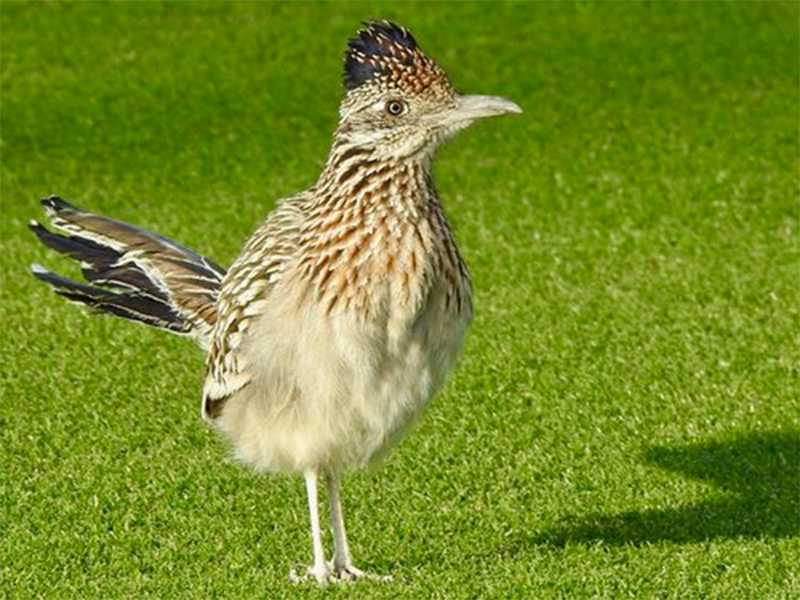


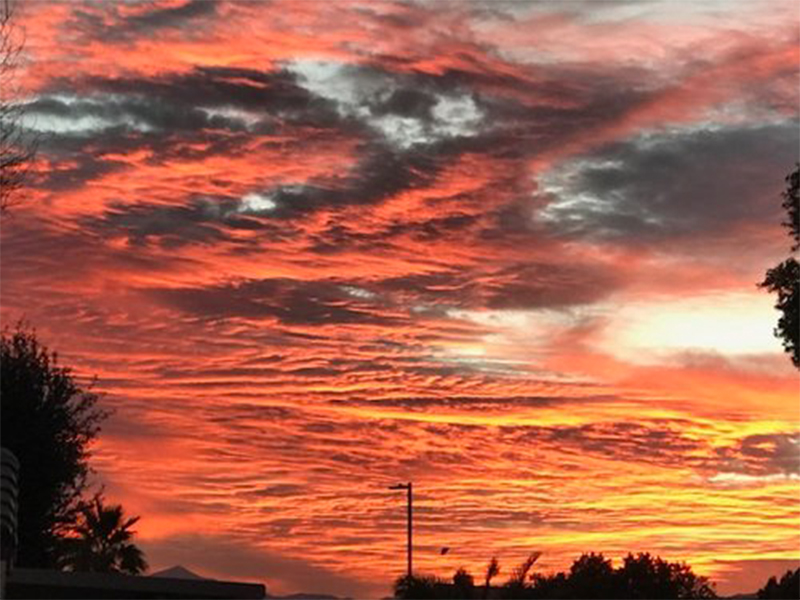
Saguaro Cacti
The Grand is home to a variety of plant life, including cacti, beautiful, and trees. The most common cacti found in the community are the Saguaro and the Barrel cactus.
The Saguaro cacti are one of the most iconic symbols of the American Southwest and are particularly abundant here in Surprise. They are native only to the Sonoran Desert and can grow to over 60 feet in some cases. Saguaro cacti are slow growing and long-lived. It can take up to 10 years for a saguaro to reach a height of just one since, and a fully grown Saguaro can live for 150 years or more!
The Saguaro cactus is an important part of the ecosystem in the Sonoran Desert. It provides food and shelter to a variety of animals, including birds, insects, and mammals. In fact, the Saguaro is often referred to as the “Sonoran Desert hotel” because so many creatures live inside.
The Saguaro Cactus also has significant cultural significance for the indigenous people of this region. The Tohono O’odham tribe has long used the Saguaro for food, medicine, and building materials. The White Tank Mountain Regional Park is a popular spot for hiking and viewing Saguaros. Desert Botanical Garden in Phoenix is another place to see them as well. To learn more about Desert Botanical Garden.
Our community is also home to a variety of animals, including birds, reptiles, and mammals. The most commonly seen birds in The Grand are the Gambel quail, Cactus Wren and the Gila Woodpecker. The Gambel’s Quail is a small, bird named after 19th-century naturalist William Gambel. Often we dismiss the natural beauty of the Quail, however, the beautiful mating sounds the Quail. Males use this call to attract females and to establish their territory. The Gambel Quail is a very social bird that typically travels in groups called “Coveys.” At this time of year we are blessed to watch Coveys of Gambel Quail Families hurry along our fairways and streets. We have a family living just outside our Coldwell Banker Building on Sunrise and I watch them daily!
Here is a Gambel Quail outside in nature lover, golfer, and friend, Lavone Kirkwood’s yard below.
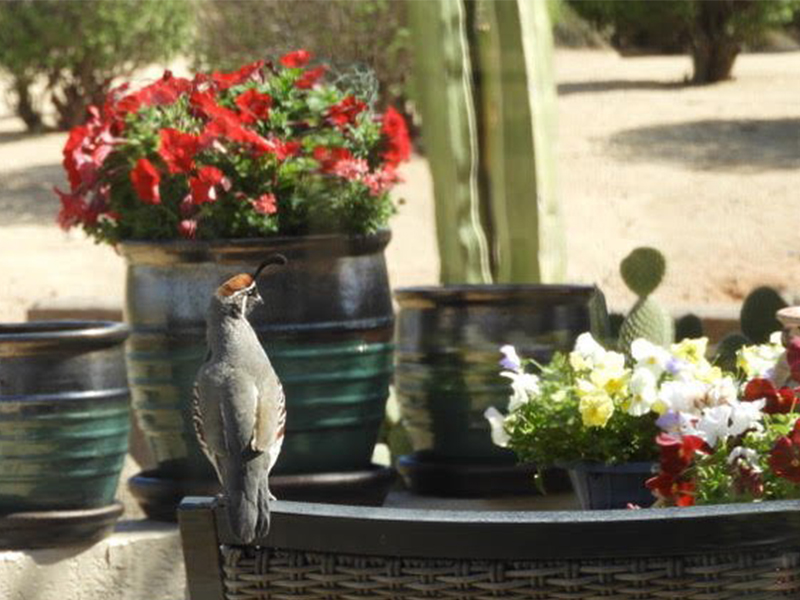
There are several species of Woodpeckers that can be found in Surprise, including the Gila Woodpecker, the Ladder-backed Woodpecker, and the Northern Flicker. Looking for the insects to each, we often watch them drilling into our trees in our yards. Woodpeckers are also known for their distinctive drumming sounds which they create by rapidly tapping their beaks against a tree or other surface. Interestingly, Woodpeckers are NON-migratory birds, and they stay in the same areas year around.
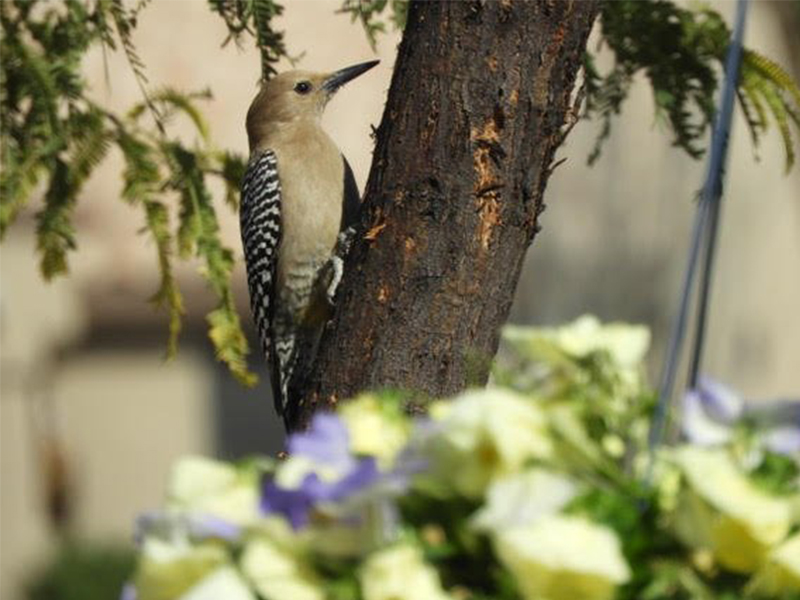


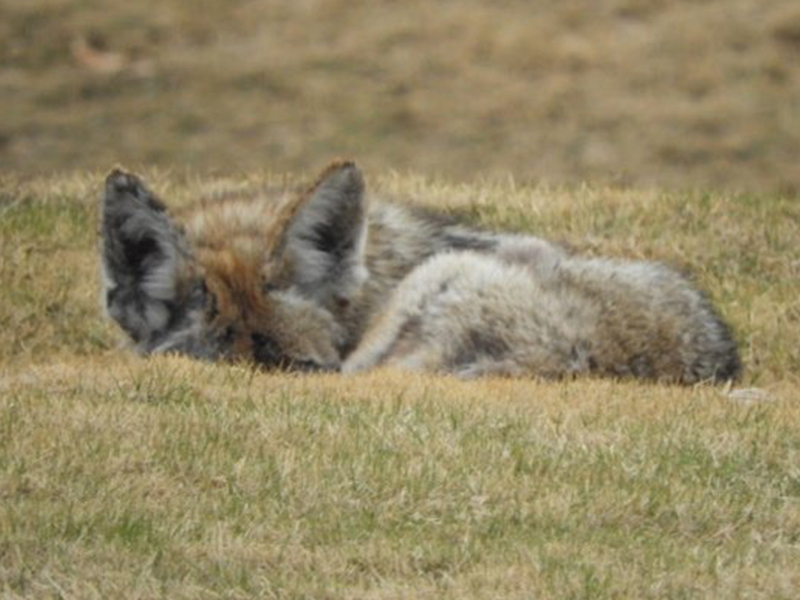
The coyote is a common wildlife animal in the desert areas around Surprise, and we have all seen their amazing capability of adaptability to thrive in our environment. In the past the City of Surprise had a “Coyote Management Plan” and an outreach plan. As of the date of writing this article, I could not find any active resources other than one email [email protected] and a set of tips on the Surprise AZ website with generic tips when encountering a coyote: do not run, maintain eye contact with the coyote, pick up your animal if it is with you and try to make some loud noise as an irritant.
Interestingly, the City of Paradise Valley has the most information on our local animals. As we have witnessed, Coyotes are born in dens which, in an urban environment can include inside our storm drains, under our storage sheds, and in holes dug on our four golf courses. The food requirements increase dramatically during breeding season which occurs between January and March, with mating season occurring in February. Coyotes are monogamous and usually mate for life, and during the breeding season, they become more vocal and active, often howling to communicate with each other. After a gestation period of around 60 days, the female coyote will give birth to a litter of typically 4-7 pups in April or May. The pups are born blind and helpless, and the parents will care for them and teach them survival skills until they are old enough to venture out on their own which starts around 6 months of age. My husband and I live on 2 North Tee Box and we have a litter just getting out right now…we see their heads in a storm drain and just one has ventured out so far this summer! If anyone knows where there is a litter that we need to stay clear of here in The Grand, please comment below.
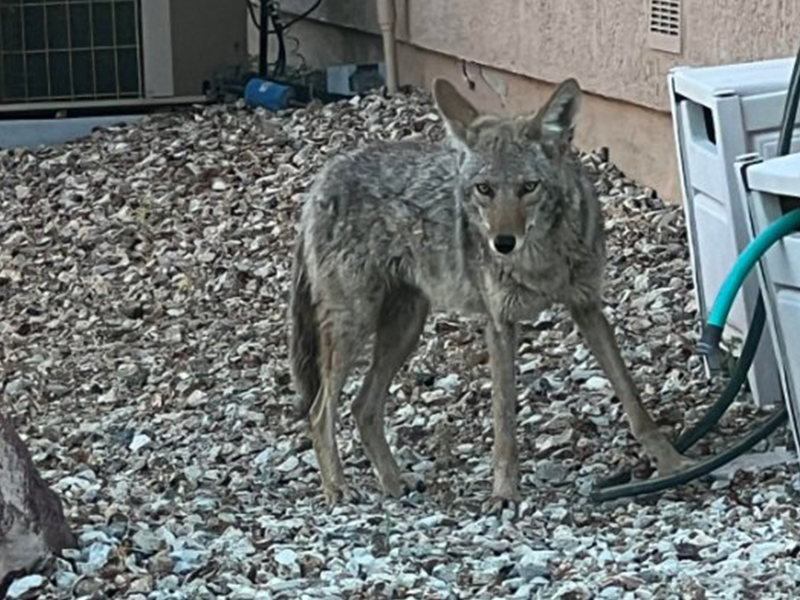
In this article I did want to address the “Folklore” of the local Coyote who bred with the Mexican dog the Xoloitzuintles. While it is an entertaining story, it is simply not true. I heard a fellow golfer try to tell me this on the golf course last month. I am very familiar with this ancient breed and have several friends who own them and show them in AKC dog shows. While it is a “low entry” breed in shows, they are popular pets in Mexico and South America. We call them “Xolos” for short “Sho’-Low” just like the town…in Arizona is how you pronounce it. Xolos make great pets and companion dogs, but because of their hairless skin, it is difficult to keep them in warmer climates because they must stay out of the hot sun. I have yet to see one living in Arizona and there are no breeders of Xolos in Arizona. The myth suggests that the hairless coyotes we see here are a result of interbreeding between coyotes and Xolos. Coyotes are a separate species from domesticated dogs and they NEVER interbreed. Coyotes have genetic mutations that cause hair loss or patchy fur. Hairless coyotes are not exclusive to any particular region or breed. Hair loss in coyotes can be caused by anything from mange, environmental factors, disease or genetics within the coyote family. We are all familiar with the one coyote who continues to wander through the courses that is completely hairless. I have not seen that one in the past few months. However, last year he/she approached our golf cart on Granite Falls South and tried to get in our cart to get food while I was hitting the ball. It was pretty obvious that someone had been feeding that coyote. I only hope that did not end up being the reason for his demise.
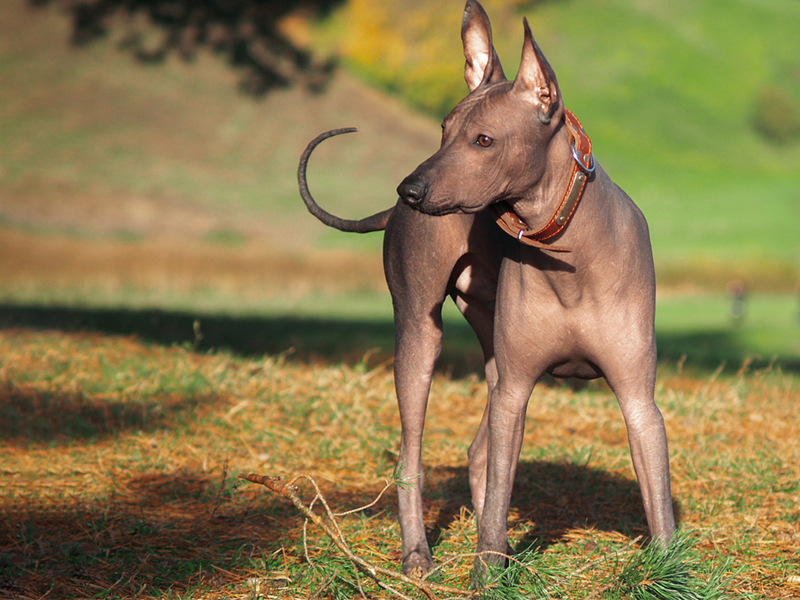

Bobcatsare known to live in Surprise and I have often seen the same one in and around our street, Hartford Drive. Bobcats are elusive animals and tend to avoid contact with humans. However, sightings of bobcats in residential areas, particularly in areas with natural vegetation or near open spaces, are becoming more common as urban development encroaches on their habitat. Interestingly, Bobcats are solitary animals and ar most active at dusk or dawn (this is when I see the one in our neighborhood). They are opportunistic hunters and prey on a variety of small animals, rabbits, squirrels and rodents. They are also known to hunt larger prey, such as deer. Bobcats are known to be territorial and will typically defend their home range from there animals. I have noticed that Bobcats seem to be so elusive to the eye when they are up against a wall or a tree. Below is a fantastic photo that Chari Norgard Captured of a local Bobcat.
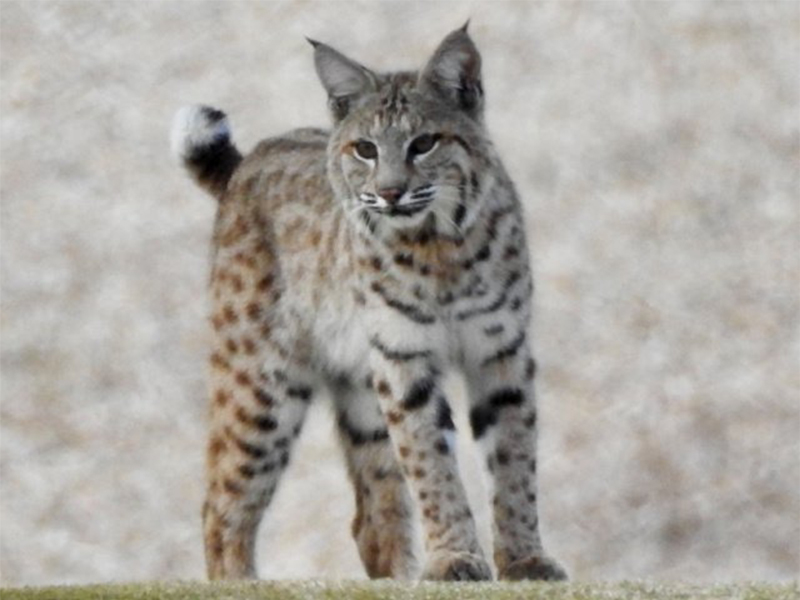

Javelinas are also a common sight in Arizona, and most notably around Cimmaron. My friends who live over there say they are regular visitors to the golf course. I have yet to see one here, however, I have seen several photos of them on Nextdoor. Adult javelinas typically weigh between 35 and 60 pounds and can grow up to three feet in length! Javelinas are most active at dawn and dusk, and are often seen foraging for food in groups of up to 20 individuals. The good news is that Javelinas disperse a variety of seeds in their ecosystems, and help to maintain the health and diversity of plant communities. While javelinas are not generally aggressive toward humans, they can be dangerous if they feel threatened or cornered. If encountering a javelina, the instruction is to ignore it, not look at it and let it go on its way. At the time of this article..I could not get anyone to furnish me with a photo of one of “our own” javelinas that live around The Grand.

In conclusion, The Grand and Surprise are surrounded by natural desert areas, and it is not uncommon to see wild animals such as bobcats, Mountain Lions, and even an occasional Black Bear! Is important to remember to keep a safe distance from all these animals, including the birds. At this time of the year, Jim and I have a family of doves that nest in the same tree and have a new family each season. While the sun sets, we enjoy listening to one of the birds “call” to the other bird at dusk to come back to the tree and rest for the evening. We always sit back and listen to their cooing sounds, and it is so inspiring when we see them each year return to start a new family.
Thinking about purchasing a property at the Grand?
Discover these two fantastic options, each featuring a secluded personal backyard where you can enjoy some of the beautiful scenery, indigenous plants, and wildlife living in The Grand offers!
Click below to find out more:

I will be at the open house here this Saturday and Sunday from 11:00 am – 2:00 pm
This spacious private backyard offers so much space that birds and quail visit daily, yet it in enclosed for your own pets to roam freely.

Enjoy the magnificent views this home has to offer on the golf course!
Get ready for unforgettable moments in this spacious and open backyard, where you’ll be delighted by the sight of magnificent wildlife from the neighboring golf course. Be prepared to witness the beauty of nature up close and personal, as stunning creatures grace your surroundings.



